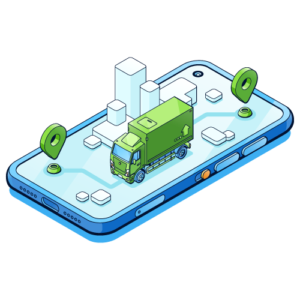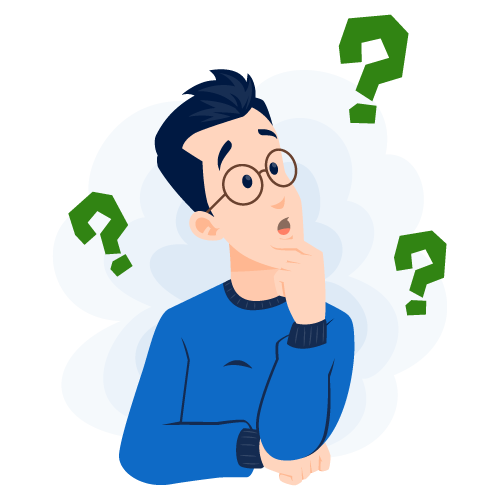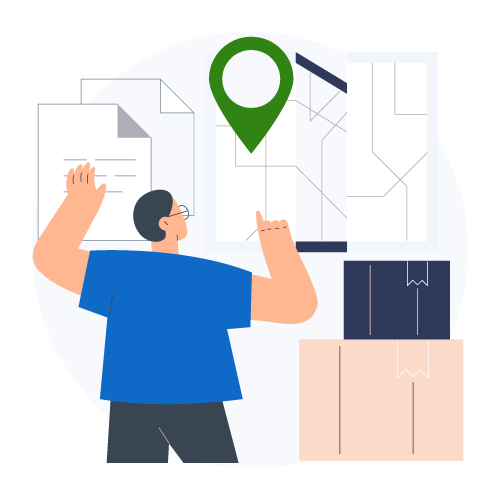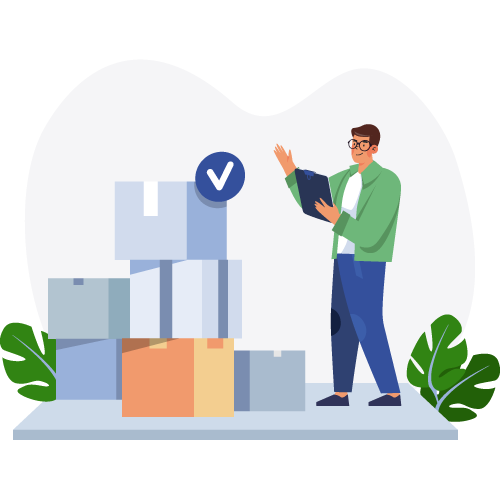
Reverse logistics-UK
Be it a supplier or manufacturer, reverse logistics handling is a problem. Availing of our reverse logistics services makes the whole reverse logistics process smooth and costs much less.
Request a Pickup
What is the purpose of reverse logistics?
Reverse logistics is used to move back products from customers to manufacturers or suppliers. It is a reversal of the supply chain. Once the product is shipped to the seller, the seller decides whether to repair and reuse the product or extract the parts that are in good condition and dispose of the waste.

Types of Reverse Logistics
Managing Returns
This involves activities pertaining to returns, reverse logistics, and gatekeeping and allows only important supply chain people inside the company. It helps companies to keep a close watch on reversed and reusable assets.
Refurbishing or Remanufacturing Products
When customers return products that are damaged or defective under warranty, the manufacturer will sell this product after fixing the issue. Remanufacturing can be laborious and high in cost.
Repairing and Recycling
The products that can be repaired will be fixed by the manufacturer. If only a few parts can be reused, then the working parts are removed for recycling and sold.
When do organizations use reverse logistics?
Reverse logistics will be used by companies when the products are in surplus, or they have outdated goods or returned defective products. These items are moved for recycling so that a new product is created and sold to customers. The main aim of reverse logistics is to regain the product value or dispose of it when it is of no use.


Benefits of Efficient Reverse Logistics
There are a lot of benefits companies reap through efficient reverse logistics. There is a reduction of time in moving the items from source to destination saving transportation expenses while retaining the product quality. With shipping delays being less, it boosts employee productivity and has a lesser impact on the environment.
Steps in the Process of Reverse Logistics
The steps involved in the process of reverse logistics include:
Handling and Processing Returns
The first step in reverse logistics is to return the received products. Here, the customer must explain the product’s condition, the reason for returning it, and return authorization. The procedure includes return shipments too.
Applying Appropriate Categories to Return
After receiving the defective product, the team will categorize the type of return in which the product falls. The product will be pushed to the right team to see whether it can be repaired, resold, or recycled.
Moving Returned Products
When the team receives the return request, they keep track of the product location and ensure that the whole return process goes smoothly. The customer may ask for a return, warranty repair, or exchange.
Repairing
The daily e-waste would be reduced by the reverse logistics team by sending the product that is defective to the repair department. They repair and make the product reusable instead of disposing it of.
Recycling
The product that cannot be repaired or reused will be sent for disposal. The product is shredded and then disposed of safely to reduce the impact on the environment.
Message us! Know how it works.
Give us a try. Discover More!
We are always ready to help our customers with the best advice and assistance.
Talk to our Service Experts.
Our experts with exceptional knowledge and experience in the field ensure you get top-quality ITAD services.
 USA
USA UK
UK UAE
UAE India
India